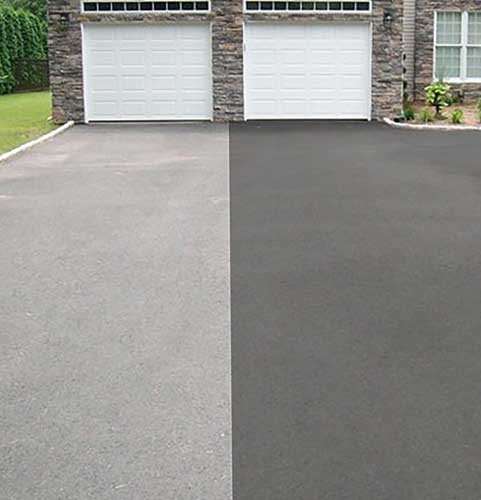Hot Mix Asphalt: A Lasting Option for Sidewalk
Warm Mix Asphalt (HMA) has emerged as a leading lasting choice for pavement remedies, offering a myriad of environmental advantages and cutting-edge innovations. As the need for green building and construction methods grows, exploring the nuances of HMA's sustainability can provide useful understandings right into the future of sidewalk services.
Environmental Benefits of Warm Mix Asphalt

Moreover, Hot Mix Asphalt helps to mitigate city warmth island results. Its dark color soaks up sunshine, lowering the amount of warmth reflected back right into the atmosphere contrasted to lighter-colored pavements. This can decrease ambient temperature levels in urban locations, decreasing the need for cooling and eventually decreasing energy intake.
On top of that, Hot Mix Asphalt adds to improved stormwater management. Its porous nature enables water to penetrate the sidewalk and reenergize groundwater products, minimizing drainage and the danger of flooding. These ecological benefits make Hot Mix Asphalt a sustainable selection for paving roads and highways.
Energy Effectiveness in HMA Production
Is energy performance a vital consider the manufacturing of Hot Mix Asphalt (HMA)? Absolutely. Power plays a considerable duty in the production of HMA, affecting both expense and ecological sustainability. One key element of power efficiency in HMA production is using warm mix asphalt (WMA) technologies (regrading). WMA enables the mixing and positioning of asphalt at lower temperatures compared to standard warm mix asphalt, causing minimized power consumption during manufacturing. This procedure not only reduces fuel usage but also lowers greenhouse gas discharges, making it a much more environmentally pleasant choice.
Additionally, improvements in plant modern technologies have led to even more energy-efficient HMA manufacturing processes. By maximizing power usage in HMA production, the sector can lower its carbon footprint while keeping high-grade sidewalk products.
Recyclability of Hot Mix Asphalt
The recyclability of Hot Mix Asphalt (HMA) is a pivotal aspect of its sustainability and long-lasting environmental impact. HMA is just one of one of the most recycled products in the USA, with over 100 million lots of recovered asphalt sidewalk (RAP) being recycled each year in brand-new sidewalk building and construction. Reusing HMA uses a number of environmental advantages, such as minimizing the requirement for virgin products, reducing power intake throughout production, and decreasing the amount of waste sent to garbage dumps.
The process of reusing HMA entails grating the existing pavement, squashing it right into smaller sized items, and blending it with brand-new accumulation and asphalt binder to produce a recycled mix. This recycled mix can frequently carry out in addition to and even far better than conventional HMA, while calling for fewer basic materials and producing lower greenhouse gas discharges. By incorporating RAP into new pavement tasks, road companies can save natural resources, lower costs, and reduce the check these guys out ecological impact of roadway building and construction and maintenance tasks. On the whole, the recyclability of HMA plays a considerable duty in promoting sustainable techniques within the sidewalk sector.

Long-Term Efficiency of HMA
Asphalt sidewalks show resilience and durability over a prolonged duration, showing the long-lasting efficiency of Hot Mix Asphalt (HMA) The long life of HMA can be credited to its capacity to withstand hefty website traffic tons, harsh weather problems, and the results of aging. Research studies have shown that properly designed and correctly built HMA sidewalks can last for 20 years or more with routine maintenance. The key to optimizing the long-lasting efficiency of HMA exists in utilizing premium products, following ideal practices in building and construction, and implementing efficient maintenance approaches. Proper water drainage, regular inspections, and prompt repairs are important for protecting the architectural stability of HMA pavements over time. Additionally, developments in HMA modern technology, such as making use of polymer-modified binders and warm mix asphalt, have actually additionally boosted the sturdiness and longevity of HMA pavements. By prioritizing top quality building and construction and maintenance methods, HMA continues to confirm itself as a sustainable and affordable remedy for durable sidewalk facilities.

HMA: Longevity and Sustainability
Demonstrating both sturdiness and sustainability, Hot Mix Asphalt (HMA) has actually come to be a foundation in the building and construction of long-lasting pavement infrastructures - angled parking. HMA's toughness comes from its ability to stand up to hefty loads, harsh weather, and high traffic quantities, making it a reputable option for roadways, freeways, and airport terminal runways. The make-up of HMA, which generally includes aggregates, binder, and filler, plays a vital duty in improving its durability and resistance to use and tear
Moreover, HMA's sustainability depends on its recyclability and energy-efficient manufacturing process. The capability to reuse recovered asphalt sidewalk (RAP) in brand-new HMA blends reduces the demand for virgin products and minimizes the ecological influence of sidewalk construction and maintenance. Furthermore, the energy performance of creating HMA exists in its lower mixing temperature levels compared to various other pavement products, bring about reduced energy intake and greenhouse gas emissions.
Conclusion
In final thought, warm mix asphalt (HMA) offers a sustainable remedy for pavement with its ecologically pleasant attributes. HMA's recyclability, power effectiveness in production, and long-lasting resilience make try this website it an environment-friendly option for roadway building.
HMA is one of the most recycled materials in the United States, with over 100 million tons of recovered asphalt sidewalk (RAP) being reused each year useful link in brand-new sidewalk building.The process of recycling HMA entails grating the existing sidewalk, crushing it into smaller sized items, and blending it with brand-new accumulation and asphalt binder to create a recycled mix.Asphalt sidewalks show resilience and strength over a prolonged period, reflecting the long-term performance of Hot Mix Asphalt (HMA) In addition, innovations in HMA innovation, such as the use of polymer-modified binders and warm mix asphalt, have further enhanced the durability and longevity of HMA sidewalks. The capability to recycle reclaimed asphalt pavement (RAP) in new HMA mixtures reduces the demand for virgin materials and lessens the ecological effect of sidewalk construction and upkeep.